It would have been exceptionally easy for Nintendo to stick with an established formula for Mario Kart World. While the series has added a few crucial new features here and there since its Super NES debut, it has settled into an extremely comfortable groove on the ill-fated Wii U. Since then, we’ve seen the franchise lean on as it introduced and a rather than another distinct sequel. Save for the expert-level, ultra-fast 200cc racing mode, the broad strokes of a Mario Kart game have gone from staid to practically frozen in amber in recent years.
Mario Kart World doesn’t completely abandon the basic structure of those previous Mario Kart games; there are still twisty, turny, shortcut-filled courses loaded with items and opportunities to power slide. But it builds on that skeleton more than any Mario Kart game ever has, adding new modes, new driving techniques, and a new focus on the vast swathes of land between the intricately designed race courses. The result can feel a little inconsistent but also like a necessary shot of new ideas into a series that has been growing stale.
Too many karts
The first thing you’re liable to notice loading up a race in Mario Kart World is just how crowded things have gotten. The expansion to 24 racers on each track (from 12 in Mario Kart 8 and eight in previous franchise titles) serves as a good way to show off the added processing power of the Switch 2. It also provides a good excuse to greatly expand the number of selectable characters and outfits available in the game, which dredge up options from some of the deeper depths of the Mario catalog (your day has finally arrived fans).
From a gameplay perspective, though, the expansion might add just a bit too much chaos to an already chaotic racing experience. That’s because doubling the number of karts in each race also practically doubles the number of items you can expect to be flying around every time the pack crosses a set of question-mark boxes. That makes it just that much more likely that you can be sniped from behind by a red shell, squished by a Mega Mushroom-enhanced racing giant, pummeled by a rain of Hammer Bros. hammers, or any number of other threats that can halt your momentum and set your racing position back a dozen places at a time.
While that kind of item-based back-and-forth isn’t new to Mario Kart, it feels like it has been taken to a new extreme by World‘s more crowded race track. If you’re in the middle of the pack, every tranche of item boxes you pass can lead, in short order, to a flurry of near-unavoidable projectiles and item-enhanced opponents cluttering your immediate space. That’s especially true in online races, where human opponents tend to be much more ruthless with their item use than even the hardest computer-controlled opponents.
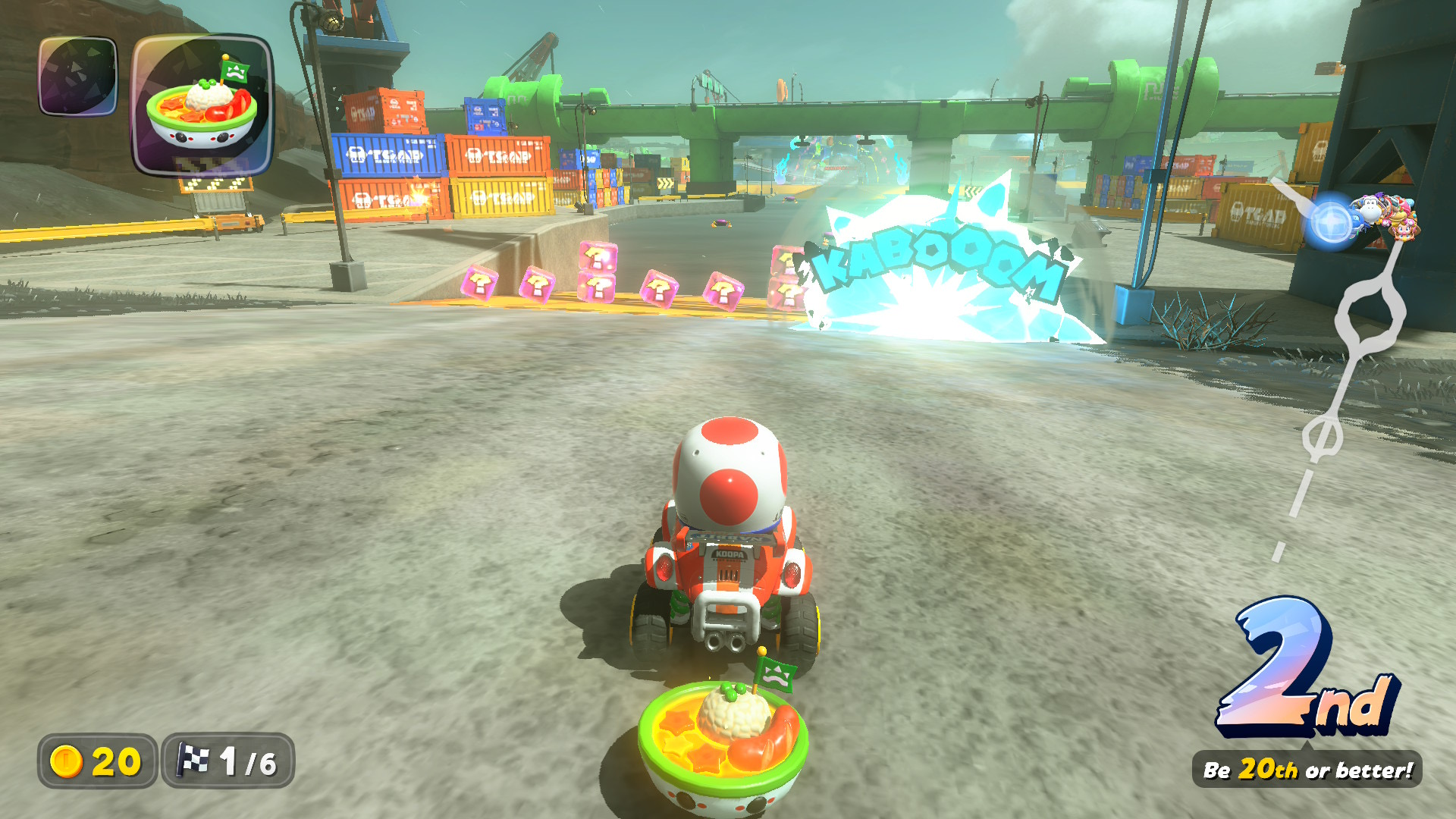
The change ultimately rewards defensive driving, where you do your best to avoid other racers and utilize protective items until you have a chance to rocket into the relative safety of the top few positions. Sometimes, though, there’s simply no avoiding a maddening series of bad breaks that can literally send you from first place to 19th in an instant.
It’s not the destination, it’s the journey
Once you’ve adjusted to the more crowded field of racers, you’ll then have to get used to the odd structure of Mario Kart World‘s main racing modes. Rather than racing multiple laps around the game’s well-designed tracks, you’ll spend the bulk of your race time in most racing modes trekking between those tracks across the great expanses of Mario Kart World‘s, uh, world.
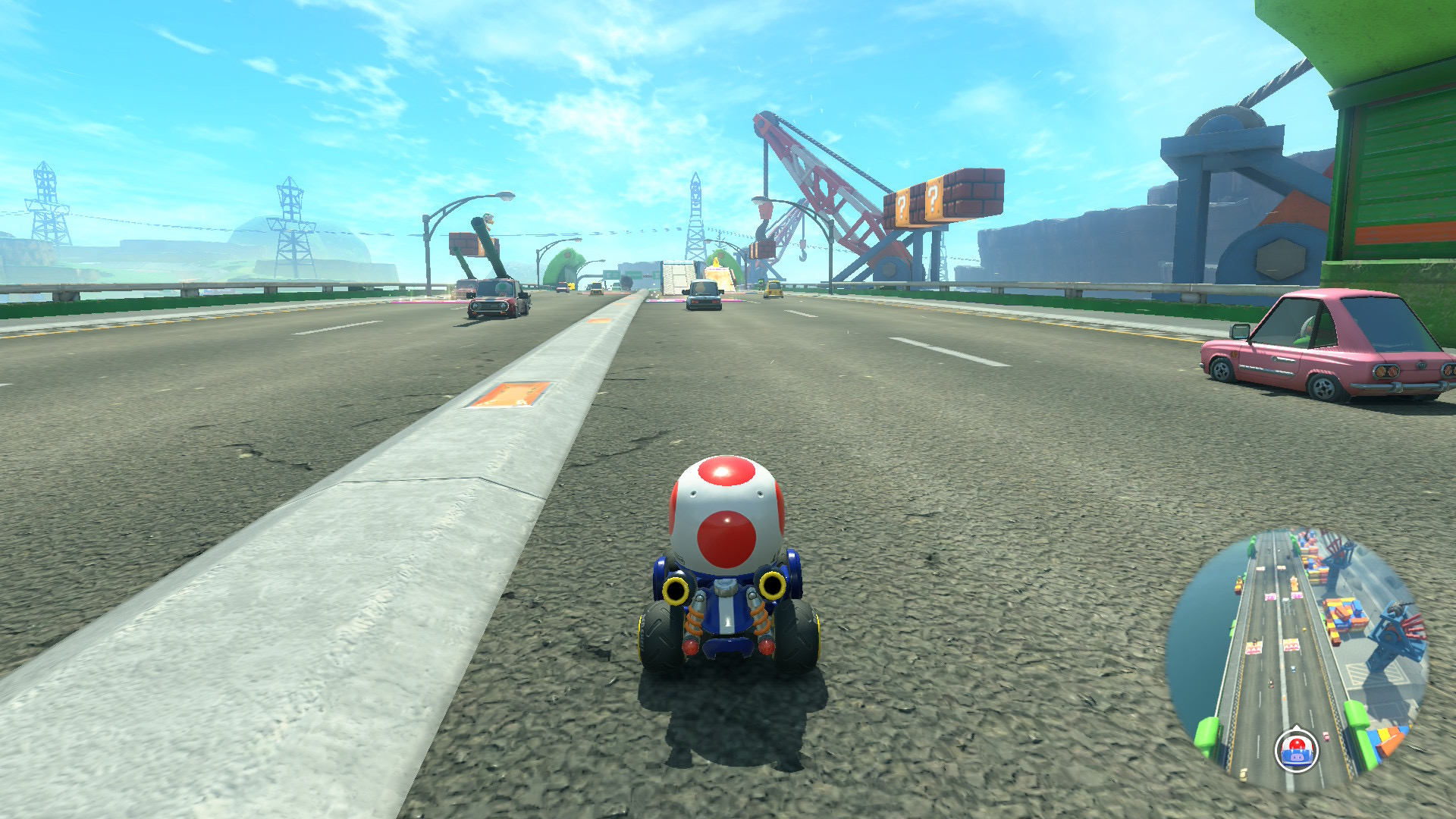
These inter-course interludes offer a decent variety to the structure, which will see you traveling through desert wastelands, down traffic-clogged highways, along the surface of tiered waterfalls, across frozen tundra, and more. What’s unavoidably similar about most of them, though, is their unbearable straightness. Players used to the undulating, crisscrossing curves of a standard Mario Kart course will marvel at just how rarely they have to powerslide around turns while shuttling between those courses in World.
These long straightaways aren’t boring, per se. The designers have done their best to dress them up with plenty of obstacles (of the stationary, vehicular, and livestock varieties), as well as jumps, dash pads, and frequent item boxes to make sure you’re still paying attention. But it can still be a jarring transition to go from two or three minutes across one of these mostly straight interregnums into the usual twisty wildness of the game’s more familiar pre-designed courses.
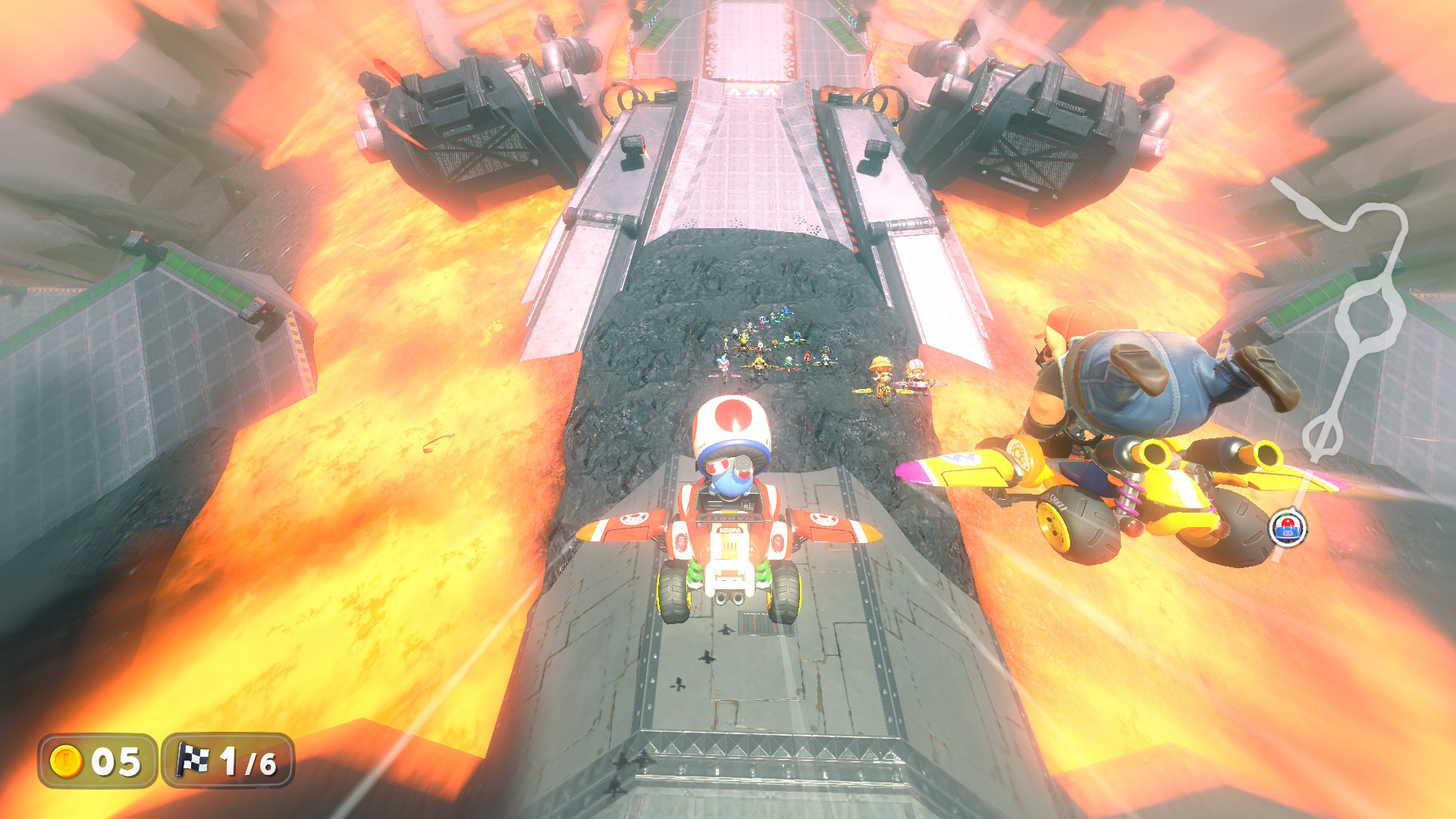
In Grand Prix mode, you only get a single lap around most of these courses before the game awkwardly pauses to declare a winner for the leg, after which you get a rolling start on another cross-country trip to another quick lap around another course. That structure means you have fewer opportunities to truly memorize the twists and turns of a course by immediately repeating multiple laps in a sitting. And while you can practice that kind of multi-lap race in versus mode, the game seems designed to push you more toward these straightaway-filled rallies.
Ultra-tense vs. ultra-chill
The ride-through-the-countryside structure feels a little more natural in Knockout Mode, which takes you through a lengthy, unbroken course that snakes through multiple different race tracks, eliminating the bottom four racers at each starting line until only the winner remains. The mode feels a bit like a marathon through the Walt Disney World resort, where you spend a few miles running through the Magic Kingdom before a long, straight stretch to get you to Epcot.
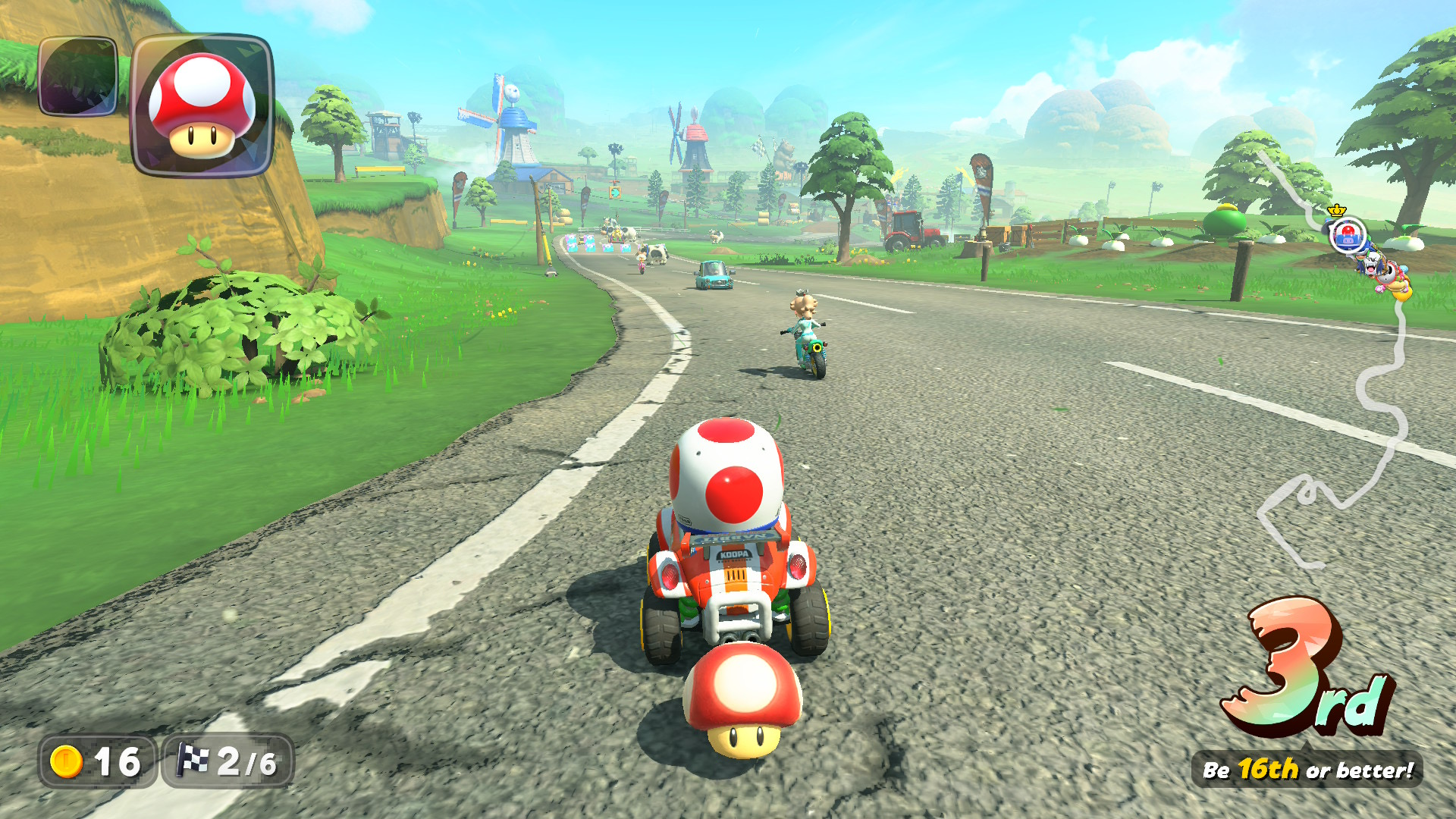
The sheer length of a Knockout Mode course makes for a thrilling and tense test of endurance, where a single successful race can take upward of 10 to 15 minutes of sustained focus without a break. But the structure can also be frustrating, given the rubber-band, up-and-down nature of a Mario Kart race. I experienced quite a few Knockout Mode races where an ill-timed item knocked me back from “comfortably safe” to “just out of the running” just before a cutoff point, eliminating me before I had a chance to grab my own item and recover.
Mario Kart World‘s other major new gameplay mode, Free Roam, is the opposite of Knockout Mode, eliminating competing racers entirely in favor of off-road exploration of every nook and cranny of the environment. This kind of chill, low-pressure exploration is completely new to the Mario Kart series and offers players a welcome chance to appreciate the care the team has put into some top-notch landscape design (as well as some top-notch Mario music remixes). It’s also a chance to stumble on countless fun moments of whimsical joy, like a bus stopping to pick up some Shy Guys waiting on a bench, or a gondola you can hop on for a moonlit boat ride.
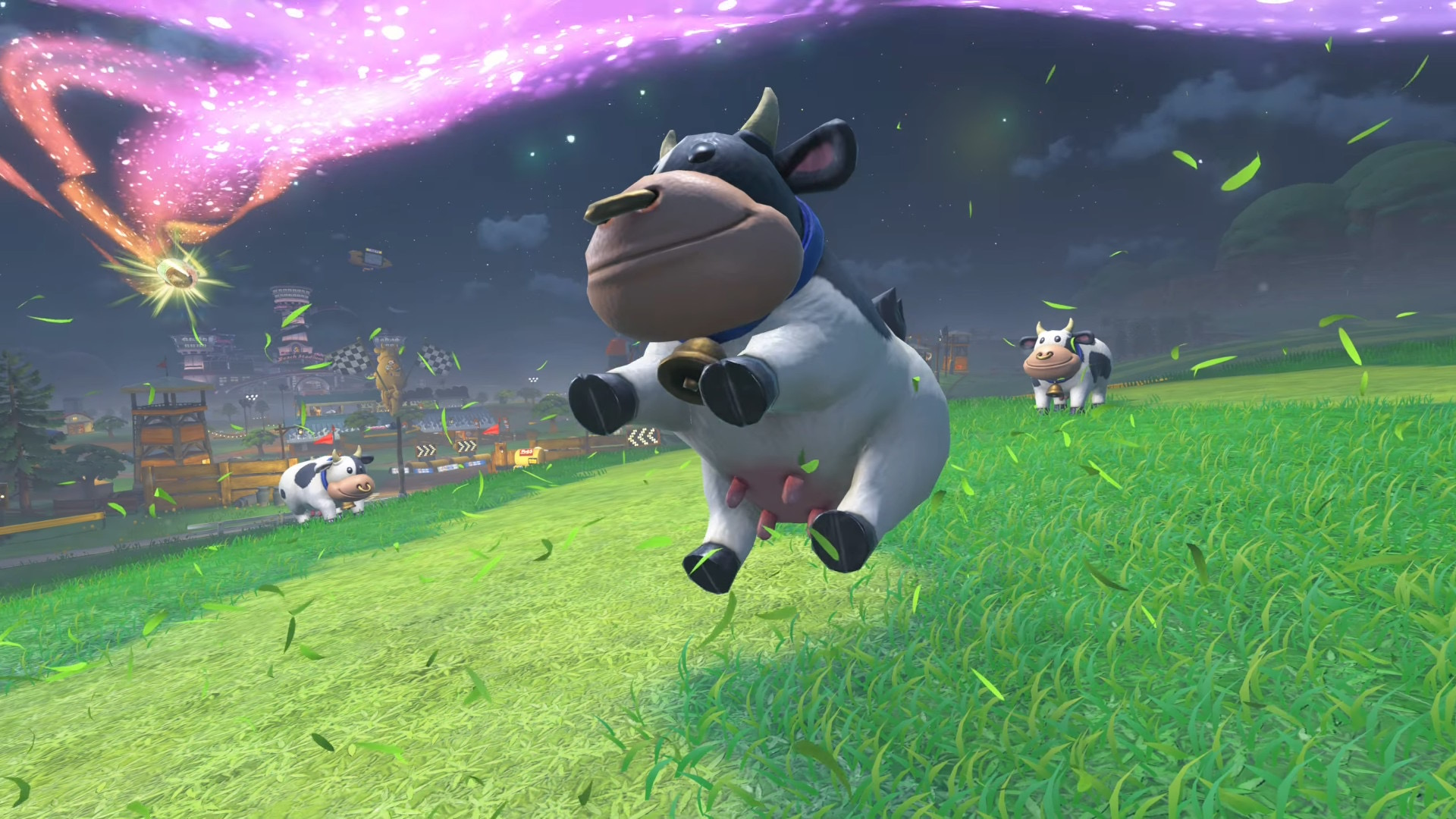
For the more goal-oriented, Free Roam also dots the countryside with collectible medallions and question-mark panels in out-of-the-way locations that usually require a bit of platform-game ingenuity to collect. Then there are the hundreds of P-Switches that activate short, Forza Horizon-style timed challenges: everything from short races to coin-collecting challenges to fly-through-the-hoops glider courses to grind- and wall-ride-heavy obstacle courses that feel pulled from the Tony Hawk’s Pro Skater series.
